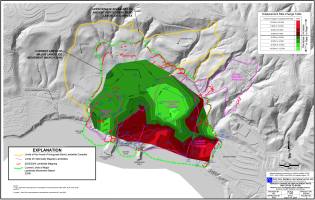jar546
CBO
There are many news stories that just came out because of recent developments. Here is some history on this area of southern California, south of Los Angeles.
However, as the situation in Portuguese Bend illustrates, even the most stringent building codes may not fully mitigate the risks in such unstable areas. It highlights the ongoing need for regular monitoring, maintenance, and possibly even reevaluation of existing structures to ensure they remain safe as environmental conditions change.

Portuguese Bend Landslide: Ongoing Challenges and Recent Developments
Introduction
The Portuguese Bend area in Palos Verdes, California, has a long history of geological instability. Recent news highlights worsening landslides in this region, leading to significant disruptions, including power cuts to approximately 140 homes. This article provides an overview of the history, current issues, and implications for building safety and code enforcement in such geologically sensitive areas.Historical Context
The Portuguese Bend area has been geologically unstable for millennia, with its first major landslide recorded in 1956. This landslide was triggered by a combination of natural factors and human activities, particularly the construction and grading that disturbed the fragile geological composition of the area. The land here is primarily composed of ancient landslide materials and marine sediments, which make it inherently prone to movement.Recent Developments
In recent years, the situation has worsened due to increased rainfall and possibly other environmental factors. As of September 2024, worsening landslides have led to power being cut to around 140 homes in the Portuguese Bend area. This precautionary measure was taken to prevent further damage and ensure the safety of residents. The ongoing land movement continues to pose significant risks to structures, utilities, and residents.Building Code Implications
For building code officials and developers, the situation in Portuguese Bend serves as a crucial case study. It underscores the importance of comprehensive geotechnical assessments before any development in areas with known geological risks. Building codes in California have evolved to include stricter regulations for construction in landslide-prone areas, including requirements for detailed site analysis, drainage control measures, and the use of flexible infrastructure that can accommodate land movement.However, as the situation in Portuguese Bend illustrates, even the most stringent building codes may not fully mitigate the risks in such unstable areas. It highlights the ongoing need for regular monitoring, maintenance, and possibly even reevaluation of existing structures to ensure they remain safe as environmental conditions change.
Conclusion
The Portuguese Bend landslide is a stark reminder of the challenges posed by building in geologically unstable areas. It also underscores the need for robust building codes and constant vigilance from building officials and residents alike. As the situation evolves, it will be essential for all stakeholders to stay informed and proactive in addressing the ongoing risks.
Last edited:



